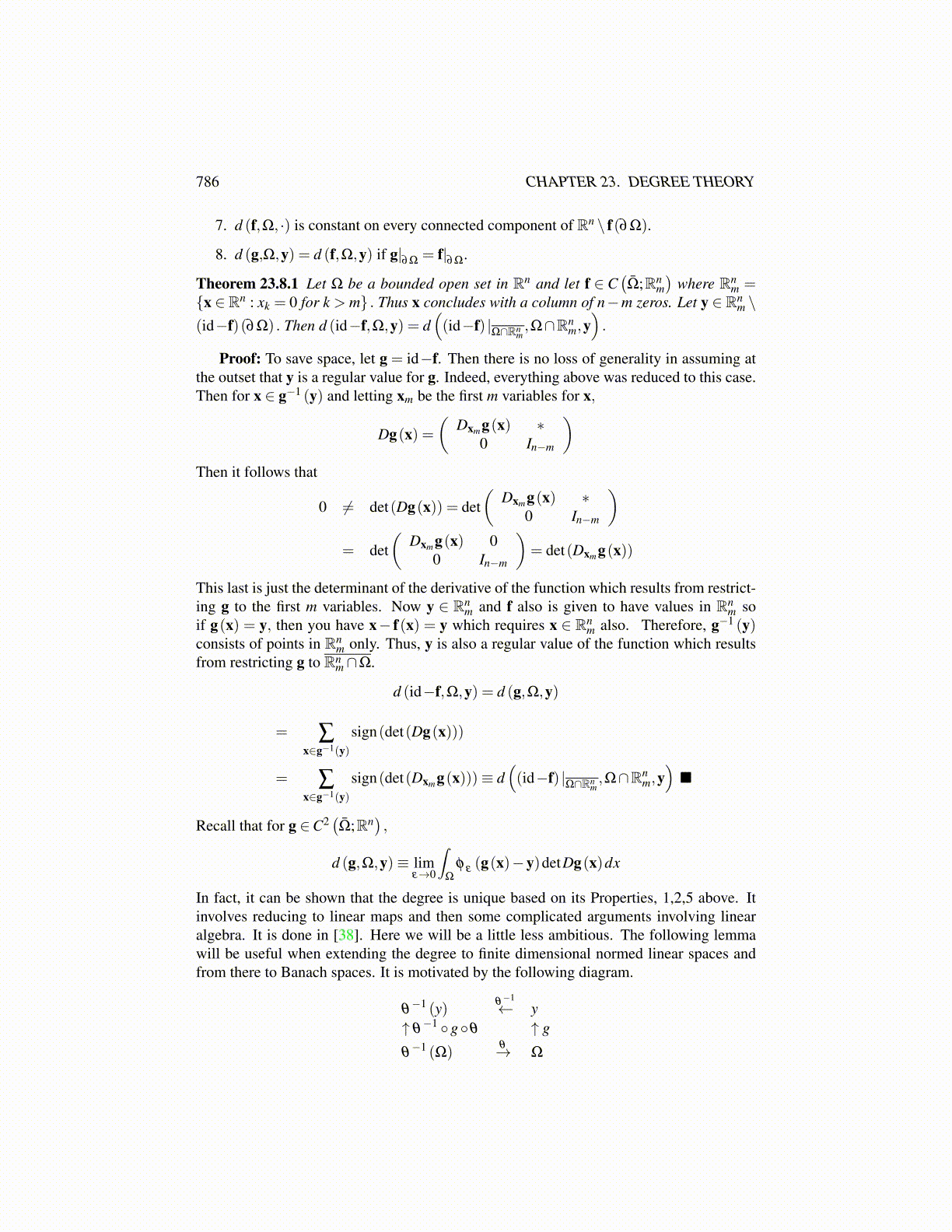
786 CHAPTER 23. DEGREE THEORY
6. d (·,Ω,y) is defined and constant on{g ∈C
(Ω;Rn) : ||g− f||
∞< r}
where r = dist(y, f(∂Ω)).
7. d (f,Ω, ·) is constant on every connected component of Rn \ f(∂Ω).
8. d (g,Ω,y) = d (f,Ω,y) if g|∂Ω
= f|∂Ω
.
Theorem 23.8.1 Let Ω be a bounded open set in Rn and let f ∈ C(Ω̄;Rn
m)
where Rnm =
{x ∈ Rn : xk = 0 for k > m} . Thus x concludes with a column of n−m zeros. Let y ∈ Rnm \
(id−f)(∂Ω) . Then d (id−f,Ω,y) = d((id−f) |
Ω∩Rnm,Ω∩Rn
m,y).
Proof: To save space, let g = id−f. Then there is no loss of generality in assuming atthe outset that y is a regular value for g. Indeed, everything above was reduced to this case.Then for x ∈ g−1 (y) and letting xm be the first m variables for x,
Dg(x) =(
Dxmg(x) ∗0 In−m
)Then it follows that
0 ̸= det(Dg(x)) = det(
Dxmg(x) ∗0 In−m
)= det
(Dxmg(x) 0
0 In−m
)= det(Dxmg(x))
This last is just the determinant of the derivative of the function which results from restrict-ing g to the first m variables. Now y ∈ Rn
m and f also is given to have values in Rnm so
if g(x) = y, then you have x− f(x) = y which requires x ∈ Rnm also. Therefore, g−1 (y)
consists of points in Rnm only. Thus, y is also a regular value of the function which results
from restricting g to Rnm∩Ω.
d (id−f,Ω,y) = d (g,Ω,y)
= ∑x∈g−1(y)
sign(det(Dg(x)))
= ∑x∈g−1(y)
sign(det(Dxmg(x)))≡ d((id−f) |
Ω∩Rnm,Ω∩Rn
m,y)
Recall that for g ∈C2(Ω̄;Rn
),
d (g,Ω,y)≡ limε→0
∫Ω
φ ε (g(x)−y)detDg(x)dx
In fact, it can be shown that the degree is unique based on its Properties, 1,2,5 above. Itinvolves reducing to linear maps and then some complicated arguments involving linear